The theme for the Lenoir Words Writers Group this month is AUTUMN. And since I have only one year’s autumn memories from Missouri, it is the way things used to feel this time of year in Virginia that comes to mind.
The link below is from a 4-minute radio essay on WVTF sometime around 2005 I think. The sound quality is not great but will suffice. The recorded version is a bit different from the text version below, that appeared in Fine Gardening Magazine about the same time.
HOME ECONOMICS Listen to the Audio
From Food to Fuel: The Yearly Cycle
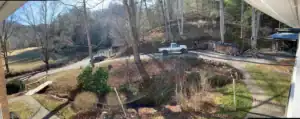
The standing corn browns and curls and our deep valley grows colder in the shadows of short September days. The season’s canning fills the cellar shelves.
My wife and I celebrate the end of long months of kneeling servitude to the trowel and the watering can and reclaim our days from the tyranny of the garden. But our glimpse of freedom is a false reprieve; our guardianship only changes in the fall from gardening to the unending care and feeding of the woodstove.
We’ve decided many years ago to continue heating our country home with wood. Every fall I have to explain this logic to myself one more time, just as I find myself standing in garden mud in the humid heat of early August blowing the gnats out of my eyes, questioning the economy of being a grower of vegetables. It would be so much easier just to pay and be a consumer.
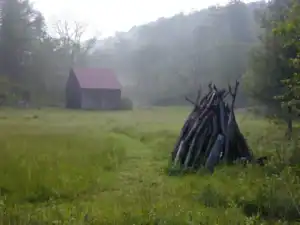
But we garden; then we gather wood—two self-inflicted, mostly-agreeable burdens in our year that are not all that different in their end products or purpose, or in their impact on our lives for good.
Neither heating with wood nor growing a year’s worth of garden produce is the path of least resistance, greatest convenience or efficiency of our finite personal energies. But by both of these labor-intensive endeavors we gain a sense of independence and control.
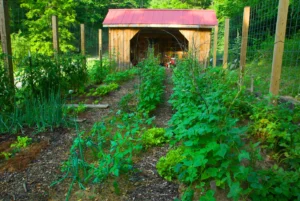
As we plan our assault on the woodlot or the corn rows, we feel like the omnipotent masters of our domain. But when we are honest about it, we acknowledge our utter dependence on the workings of sun-heat, rain-sap, and soil-plus-time.
I carry the heavy pieces of wood one by one from forest to the truck to woodpile to stove; we stoop, bend, tug, water, hoe, weed, lift, and harvest each of a dozen varieties of prolific root and fruit.
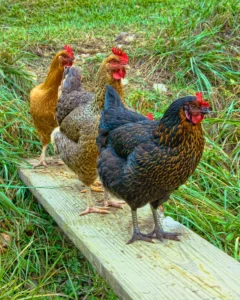
And in the end, we are only the middlemen—facilitators standing by, with relatively little control and not all that much to do with the process but collect the trunks of trees and fruits of certain edible plants that nature makes of her own secret raw materials.
Our comfort over winter that comes from filled canning jars and firewood’s warmth depends on the internal wisdom of roots, trunks and leaves. It relies too on the integrity of our woodcutter’s tools, gardening and canning utensils, and the strength of these aging bodies.
All must work, together—nature, tool and human hands. Our neatly stacked woodpile and the yellow, green and gold canning jars lined up like edible art in the dark vault of the cellar are testimony that for one more year, we have lived in a precarious harmony with our wits, our own bones and with the land that somehow sustains us.
Staying warm with wood is a futurist’s endeavor that begins at least a full year ahead of need so that when the five months of perpetual wood stove feeding are ahead of us, the fuel is already there– dry, split, stacked and close at hand. Our woodpile demands attentiveness to the calendar and weather with an urgency and care unknown to someone who merely turns up a thermostat and pays a heating bill.
These forward-thinking considerations are equally true for the anticipatory rituals of gardening—which, in the end, is also about acquiring fuel and maintaining body heat. Heating our home with wood and kindling our internal metabolic fires with summer’s produce merges our lives with the biology of wood and living soil, with our temperate leafy ecosystem and the climate of changes in the year ahead.
We will stay warm and full only if we are vigilant and prepared, aware of need in a larger frame than the moment’s comfort. Living these cycles gives us a ‘bigger-picture’ perspective that I count among the healthy benefits that come from our investments in them.
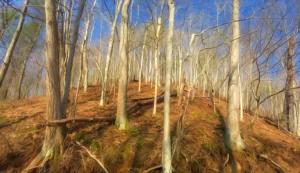
The garden of this year is past. Lessons in the cold months ahead won’t come from the fenced domain of the garden but from open, wooded hillsides of Goose Creek; from the splitting and stacking and stoking that will keep fires throwing flickers of flame through the glass door of the wood stove into this warm room from late September until mid-April.
Then, as the days lengthen in the spring and the soil thaws through mud to crumbling dark loam once again, the garden’s care will become the center of our labors once more. Ashes to ashes, dust to dust. And so it goes.
We have come to a changing of the guard. Our garden is hibernating, and it is time to go hunt the bare bones of walnuts, locusts and oaks. It is hard work. It is good work. It is our economy, what we do, and in my ledger, there is no better pay for a day’s work than this.
 – Fred First is an author, naturalist, photographer watching Nature under siege since the first Earth Day. Cautiously hopeful. Writing to think it through. Thanks for joining me. Subscribe to My Substack HERE.
– Fred First is an author, naturalist, photographer watching Nature under siege since the first Earth Day. Cautiously hopeful. Writing to think it through. Thanks for joining me. Subscribe to My Substack HERE.

